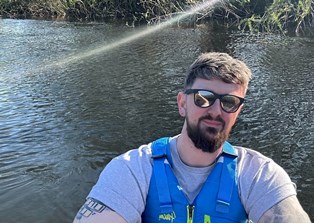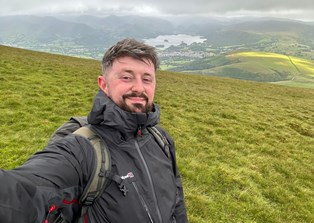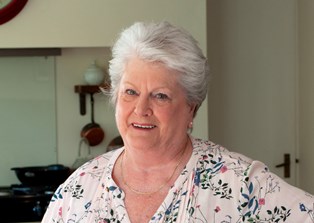Yvonne's Story
In her story Yvonne tells us how making small, gradual changes to her routine and lifestyle has allowed her to continue with her work, hobbies and interests whilst accounting for her psoriatic arthritis symptoms.
Life has been full of surprises for me, the good, the bad and the unexpected. I was diagnosed with Psoriatic Arthritis (PsA) without skin condition roughly 2 years ago, I was astonished, this was the unexpected! I had previously been diagnosed with osteoarthritis several years earlier as my finger joints started to become knobbly and stiff. I just thought this is how it is in your 50’s! Then it seemed like I woke up one day and the other joints (hips, toes, wrists, ankles...) started to flare up, become painful, red fingertips and general fatigue.
It happened so quickly after my husband died and the routine I had in place of running several times a week and enjoying exercise was becoming harder and harder. Additionally, I began to feel I was not able to cope with the physical aspect of work. My teaching career was beginning to be too much as the long hours with fatigue was beginning to impact heavily on my performance.
My revisions showed that I needed stronger medication as I was getting worse and tablets quickly progressed to weekly injections, which has a challenging nausea side effect. I felt I was slipping into a void, dealing with pain management, the nausea, fatigue and trying to be ‘me’ so I could carry on as normal. It was helpful to read the information in support groups and not feel so isolated. But when you are in pain most of the time, it’s hard for people around you to understand what that feels like. I was getting very low and depressed about my future and dealing with PsA.
I recall having this conversation one particularly bad day, with my son. As I mentioned the growing frustration and my future, he suggested that trying to do everything I do, in the same way I did it before might not be the way forward. I don’t have to stop but adapt it to the level I can manage and focus on what I can do, not what I can’t. Also, had I tried looking at how my experiences with PsA can be used in a different way?
We sat down and did lists, what I can do, what I would like to do and the impossible! This ‘vision board’ approach really helped. I loved to run, so my son suggested maybe walking a distance with a time goal can be motivating. I spoke to my Pilates teacher and she gave me a complete routine to do at home for gentle maintenance exercise. I love to teach, so refining this down into different areas and online work. I made little changes, bit by bit so I got used to them and it didn’t feel like I was ‘giving up’!
Opening up to friends and family about the ‘good’ and ‘bad’ days meant I could say ‘no’ about joining in with events, meet ups and days out if I really knew I was not up to it. They understood! The last thing I wanted was to ‘give in’ to PsA but working with it was definitely helping me mentally. I used to feel I was failing. Having these little goals were like milestones.
I also opened up a new area in my life, studying Life Coaching with phototherapy and Shinrin Yoku – Forest Bathing. The coaching helped me explore my feelings and emotions, come to my own conclusions and where I am right now. When I became qualified, I extended this to individuals or groups to offer the same space to use the tools to talk. It's going well and additionally, I realise we all have things in our life that we are dealing with. Some are more visible that others!
And Shinrin Yoku – Forest bathing was a beautiful discovery I made whilst researching PsA. This is something I regularly do for myself and with others. Plus, just being outside enjoying good company and a chat is a therapy in itself.
Would I have done these things without having PsA? I doubt it as I would have continued with the routine I had established over decades. Having PsA is not easy, the challenges are there. But it also made me stop and think about myself, something I had not done for a very long time and how to manage my emotions and physical condition. I have learned it’s ok to say I am having a bad day and have a ‘to do’ list and a ‘not to do’ list! I think about what I can do and expand on that. Things don’t always have to be in upwards motion, they can be horizontal too!
Read more real-life stories from people living with psoriasis and psoriatic arthritis.







